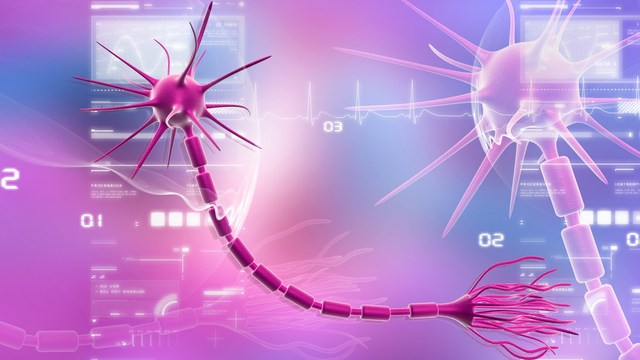Amyotrophic lateral sclerosis, also known as ALS or Lou Gehrig’s Disease is a neuromuscular disease that causes a healthy brain to lose touch with the body it lives in. While the brain continues to function normally, the nerves that control muscle movement gradually deteriorate so the signals from the brain never get to the muscles. Without instructions from the brain, muscles are not able to move.
Researchers who are trying to find a cure for ALS believe the disease is most often caused by a combination of genetic factors that make a person more likely to develop the condition along with other factors that they have not been able to identify yet. Now, researchers at the University of Pennsylvania, working in conjunction with scientists in Germany, have discovered what they believe is the most common genetic component to ALS.
Neurons are cells in the nervous system that carry electrical signals through all parts of the body. ALS develops when neurons in the spinal cord stop working, which blocks the signals going from the brain to the muscles.
Some proteins produced by the body help the function of the neurons while other proteins are toxic to the neurons and may cause them to deteriorate and stop working correctly. Scientists already knew that the protein called TDP43 plays a role in the ALS. The new research at the University of Pennsylvania discovered that a protein known as ataxin 2 is also involved in ALS.
Production of the ataxin 2 protein is controlled by the ataxin 2 gene. In patients with ALS, the ataxin 2 gene mutates so that it is longer than normal. This causes the ataxin 2 protein to contain more of the amino acid called glutamine than it normally should. The excess glutamine appears to prolong the life of the ataxin 2 protein. It also causes the ataxin 2 protein to become toxic when it associates with the TDP43 protein. This toxic combination appears to be a contributing factor in patients with ALS.
Only 5 to 10 percent of patients with ALS have a family history of the disease. The remaining 90 to 95 percent of patients have what is known as sporadic onset of the disease, which means there is no family history of the condition. Scientists also recognize that it is possible that more patients have a family history of ALS that is not documented. In some cases, family members may have died from what we now call ALS before the condition was discovered and tracked.
The discovery of the toxic interaction between ataxin 2 and TDP43 gives researchers a new avenue for research. Future therapy may focus on identifying patients with longer than normal ataxin 2 genes and providing treatment to prevent ataxin 2 from interacting with TDP43 to prevent the toxic reaction from taking place.
Sources:
MDA/ALS News Magazine
Science Daily






Add a CommentComments
There are no comments yet. Be the first one and get the conversation started!